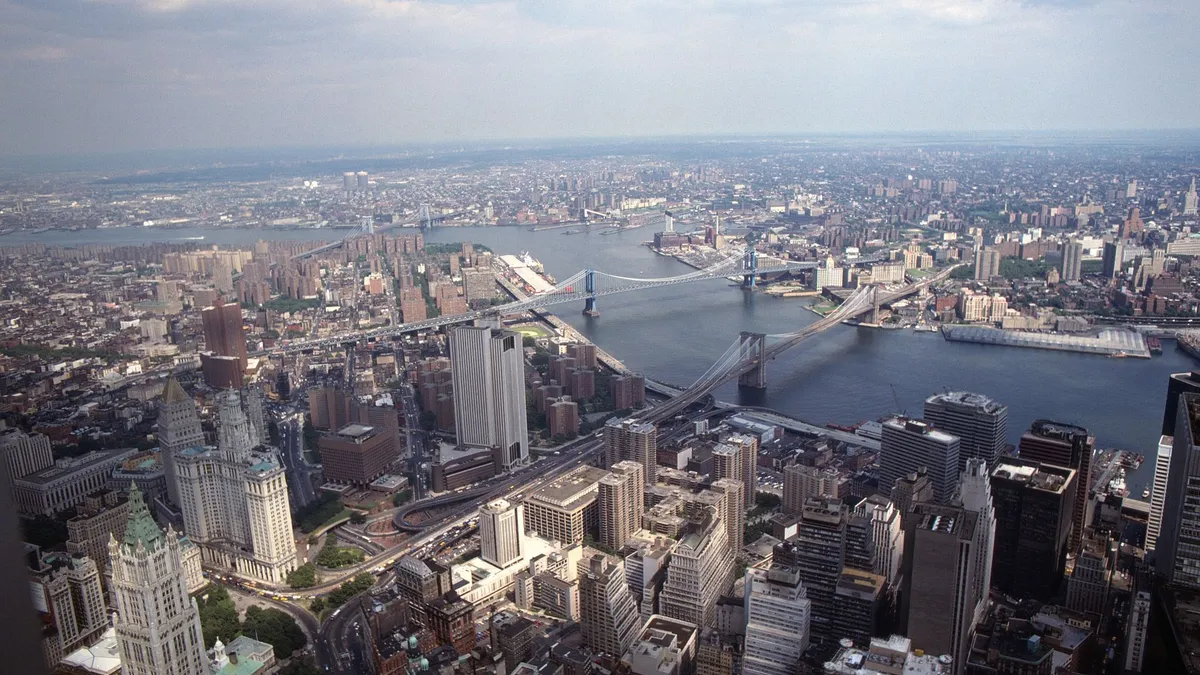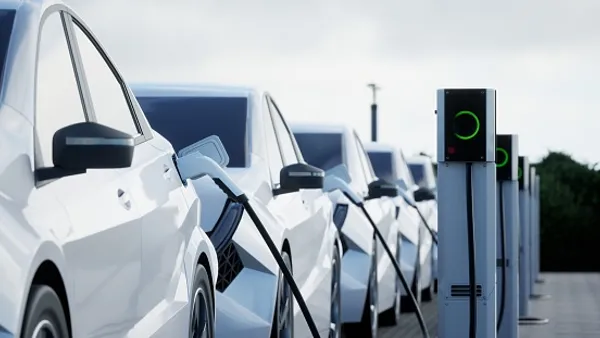As New York moves ahead with its Reforming the Energy Vision (REV) process, utilities are turning to unconventional solutions to postpone or avert traditional infrastructure upgrades, save customers money while simultaneously moving the state closer towards a new energy economy.
These new solutions—non-wires alternatives, or NWAs—utilize the spectrum of grid edge alternatives, from demand response and efficiency to microgrids, distributed resources and utility-sited renewables.
Most recently, Rochester Gas and Electric issued a request for proposals for projects that would help defer $11.8 million in substation investment by adding distributed energy resources in its territory to address growing demand. The utility needs to reduce the peak loading on the individual transformer banks at its Station 43, and is seeking resources from 2019 through 2025, beginning with at least 1.5 MW.
New York State Electric & Gas is seeking distributed energy resources in the area of its Java Substation, to reduce peak load on a transformer bank to below its nameplate 5 MW. The utility is spending about $28.5 million and needs to procure at almost 6 MW of resources by 2024.
The requests for proposals show New York utilities are forging ahead with the types of solutions regulators hoped the REV initiative would bring about. But how will the projects come together? What types of resources will be used, and how will the utilities procure them?
For some insight, Utility Dive takes a look at Consolidated Edison’s Brooklyn-Queens Demand Management project, the veritable grandfather of NWAs. The utility got approval for the project two years ago, as growth in the NYC boroughs of Brooklyn and Queens meant feeders serving two substations were on pace for a 69 MW shortfall by 2018. Rather than spending $1.2 billion for new substations, feeders, and switching stations, the utility has turned to a range of demand-side options, as well as utility-sited resources.
Trying to estimate how much money the plan could save customers is difficult, and in the end, the substation investment may still be necessary, only deferred. But the project will stave off larger rate increases, while pushing ConEd's distribution grid into a new era of efficiency and distributes resources.
"From my perspective, there is a more than normal level of excitement for this project," said Greg Elcock, BQDM project manager. "This is a test bed for what will eventually become commonplace under REV. Here at ConEd we seem to be doing a lot of thing first, so for the staff managing these projects there is level of excitement, seeing the ideas work."
The BQDM project will cost an estimated $200 million, and so far, the utility has invested about $24 million. More than half of that spend has been on customer incentives, and the utility expects that trend to continue throughout the program.
In total, BQDM calls for 17 MW of infrastructure investment and 52 MW of demand-side solutions on both the utility and customer sides of the meter.
First-year goals
ConEd’s first-year goal on the customer side included 9 MW of peak hour resources, and the utility said it has achieved that goal ahead of schedule. In the first quarter of the year, ConEd contracted for 2.32 MW of load relief at peak time, bringing the total load relief it has so far acquired to 10.68 MW.
Most of the resources have come through two efficiency offerings: the Small Business Direct Install (SBDI) and MultiFamily Energy Efficiency (MFEE) programs. ConEd ran these programs through its Energy Efficiency Portfolio Standard until the end of last year, and then shifted them to its Efficiency Transition Implementation Plan. So far, the utility has either installed, or reached agreements to install, efficiency measures at more than 4,300 small businesses and more than 1,000 multi-family buildings, including more than 7,500 apartments.
Bringing thousands of accounts on board meant the utility had to reach out directly, contacting customers through local community boards, elected officials, environmental groups, business organizations, civic organizations and other stakeholders. While explaining the demand management project is a part of the pitch, in the end it still has to be about the individual customer, said Elcock.
"We start out with a high-level and general explanation of what we're doing, but you need to rapidly get to ’What does it do for me,’" he said. "The message has to be fairly simple, delineate what we’re trying to do, and quickly explain what is in it for the customer."
The SBDI program existed before the Brooklyn-Queens project, but an “SBDI Adder” boosted incentives to customers in order to bring on as many as possible. The program, open to commercial customers with a peak demand of 300 kW or less, includes a walk-through survey identifying cost-effective electric efficiency measures. A contractor will do the installation - normally charging the customer just 30% of the cost, but with the SBDI Adder the upgrades are free.
The existing MFEE program includes both measures installed within apartments and in common areas of buildings. Under the basic offering, the utility covers 100% the cost of upgrades in apartments and 40% of common-area upgrades. With the adder, all of the upgrades are done at no cost to the building owner.
2017 & 2018
ConEd met its goals ahead of schedule this year, but the bulk of customer-side resources are planned for next year—to the tune of 23 MW, with a final 9 MW planned in 2018. To reach that, the utility will have to look beyond efficiency. Demand response is the next target, and the utility is making progress on that resource.
Last week, ConEd completed a demand response auction that is significantly different from the way it typically contracts. Rather than a tariff reflecting a cost-benefit analysis, the utility got permission to suspend the tariff and move to an auction that generated megawatts likely be paid a higher rate, but also put to use more often.
"The resource is probably going to be called on a more frequent basis than the existing program," said Elcock, "and so we are going to compensate differently. With the expectation that it is going to be called much more often."
So far, the utility is not disclosing the amount of capacity it will procure through the auction.
"We expect demand response to become an important part of the 2017 and 2018 years," said Elcock. "We expect to get significant results."
Working with NYSERDA, ConEd is also offering additional funds for eligible combined heat and power (CHP) projects in the Brooklyn-Queens area. The utility will provide incentives up to the base incentive level that NYSERDA offers under its CHP Acceleration Program, for systems sized from 50 kW to 1.3 MW.
ConEd has also been working with the New York City Housing Authority to find demand savings. Examining more than 60 housing complexes and over 29,000 housing units, they discovered more than 46 MW of possible demand savings, and then looked at what funding opportunities existed but had not been fully utilized.
Ultimately, ConEd opted to pursue 2.4 MW of load relief measures through the partnership with the Housing Authority, focused on lighting, as well as an in-unit window air conditioner swap pilot, though the Authority already had the project planned.
And the utility continues to move forward on a commercial refrigeration storage pilot that would target large facilities like grocery stores. Axiom Energy was chosen to execute the project, targeting 300 kW in 2017 and 1,200 kW in 2018.
"A thermal storage system is designed to offset process cooling load for a predetermined period, callable upon ConEd’s request," according to the utility's most recent progress report. "A salt water solution is frozen during off peak hours that can then be used to provide up to four hours of load relief during periods of reliability need by displacing refrigeration compressor load."
The utility-side of things
On ConEd's side of things, the company is installing a Distributed Energy Storage System (DESS) that will provide 12 MWh of battery energy and can be configured to deliver power at 1 MW for 12 hours or 2 MW for 6 hours.
The utility hit a snag in the first quarter, when its application at the Board of Standards & Appeals was delayed, but it is evaluating new possible locations. Construction is slated to begin this fall, with operations beginning in the second quarter of 2017.
A distributed generation resource would deploy ConEd's existing Mobile Power Interface combined with a Mobile Electric Generator. The utility said the project was considered for this year, but is now on hold until 2017 as it "evaluates diversified generation solutions including fuel cells, additional batteries, and solar."
A voltage optimization initiative could bring in up to 7 MW. The project will optimize the voltage on a 27 kV primary system, including a 4 kV overhead system. Upgrades at the area substation Brownsville 1 are near completion, and area substation Brownsville 2 work is almost complete.
The project is providing 4 MW of demand reduction this summer.
The Brownsville substation is being targeted for multiple projects. In March, the utility closed an RFP targeting 1 MW of solar generation by installing panels at 10 substations and other buildings it owns in the BQDM area.
A fuel cell project is also in the works. Last year, ConEd closed an RFP for up to 1 MW of fuel cells. A vendor and business model has been selected, and contract negotiations are ongoing. The fuel cell project is expected to be in operation before June 2017.






















